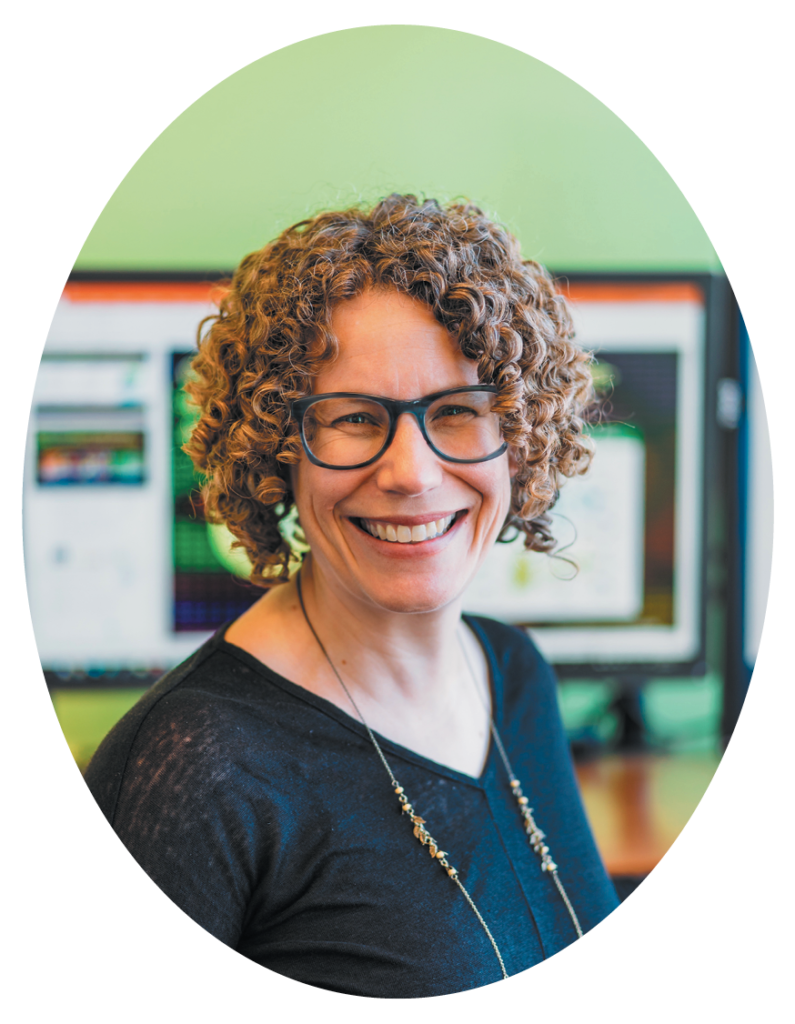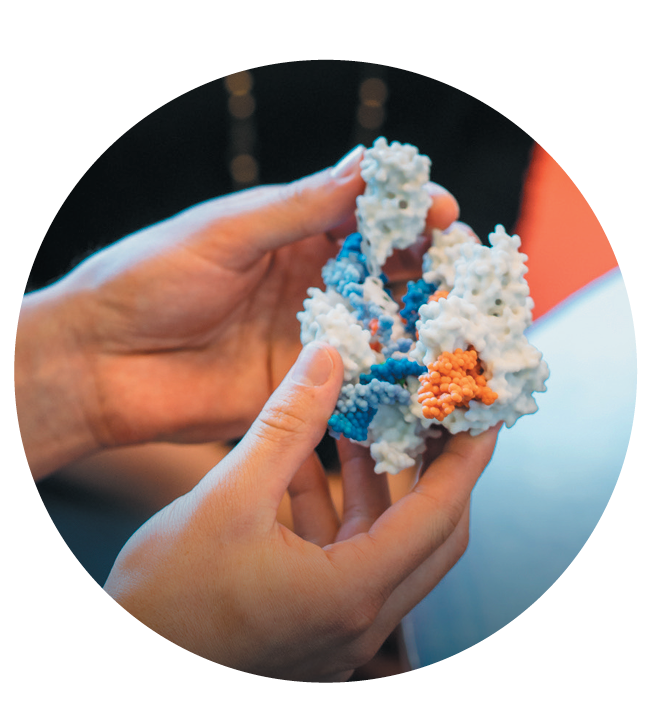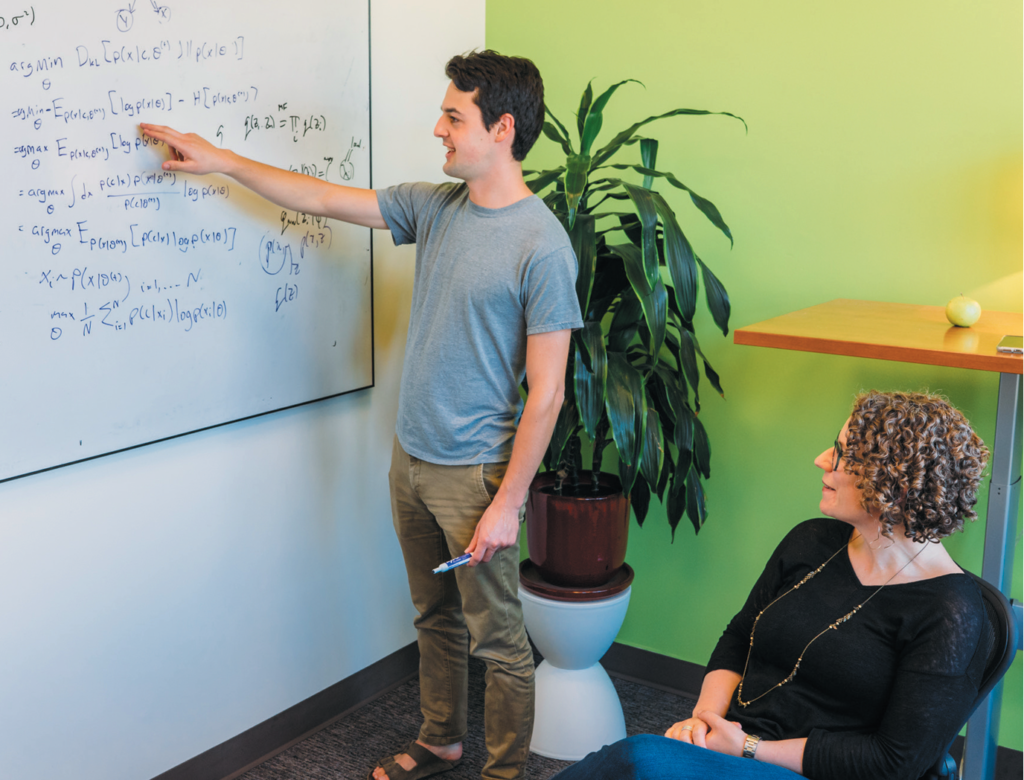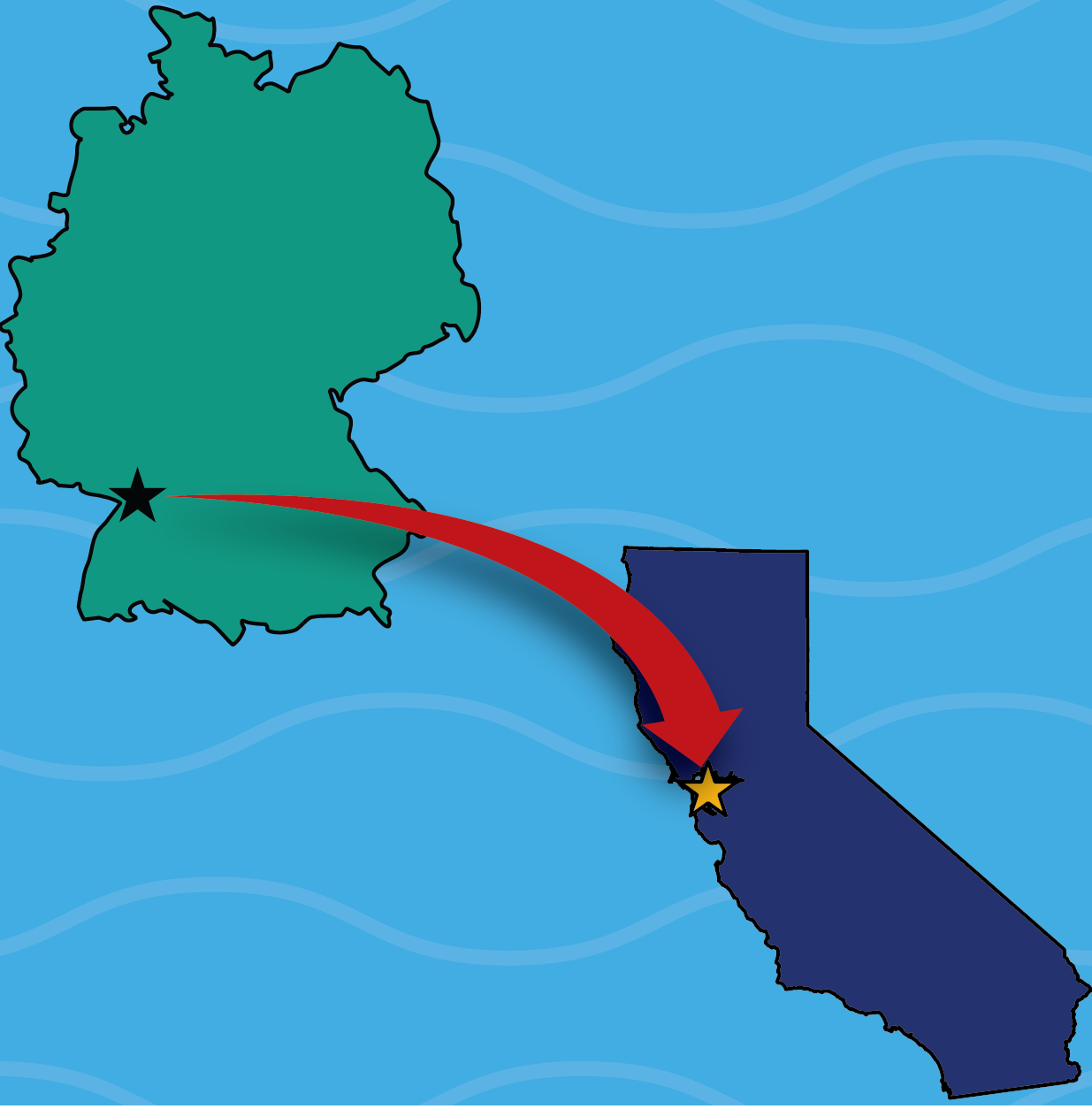Faculty profile
By Nina Pak
November 26, 2018
 Professor Jennifer Listgarten
Professor Jennifer Listgarten
The first thing I noticed walking into Professor Jennifer Listgarten’s office—before seeing large computer screens and a whiteboard full of colorful equations—was her expression of excitement. “This is the cutting site,” she exclaims, holding up a 3D model of Cas9, the enzyme behind the famous gene editing technology CRISPR.
Listgarten received her PhD in computer science from the University of Toronto before beginning her ten-year career at Microsoft Research. As the emergence of CRISPR revolutionized molecular biology research, Listgarten leveraged her machine learning expertise to maximize the efficiency and precision of the CRISPR technology.
Now a professor in the Department of Electrical Engineering and Computer Science and the Center for Computational Biology at UC Berkeley, Listgarten continues to solve biological problems using machine learning tools. She is a Chan Zuckerberg Investigator and serves on the steering committee for the Berkeley Artificial Intelligence Research (BAIR) lab. Her work in developing models and corresponding tools exemplifies the power of machine learning to accelerate discovery in biology research and beyond.
NP: How did you get to where you are today?
JL: There is not a brief version of this. Let me start by saying that I had no idea what I was going to do when I started my undergraduate studies. I first enlisted in courses like physics, math, and chemistry and ended up with a physics degree. I then studied computer vision and then machine learning and biology. My whole trajectory through formal school and beyond had been just meandering, but it ended up leading me to the intersection between machine learning and biology. It was a bit of a random walk based on my interests and who was around.
Becoming a professor was very unplanned. Five years ago, I would have said, “I will never be a professor.” At some point, I had also said to myself, “I will never ever do a PhD. I will never ever do research for a living.” And now the joke I tell myself is that I will never ever win a Nobel Prize, but unfortunately it doesn’t always work that way.
NP: How did you become interested in machine learning?
 David Brookes inspecting a 3D printed model of the Cas9 protein.
David Brookes inspecting a 3D printed model of the Cas9 protein.
JL: When I was working on my Master's in Computer Vision, I was not aware of machine learning. I did not take any courses, even though I was at one of the central places for machine learning, the University of Toronto. One life-changing event was when Quaid Morris gave a talk about merging microarray gene expression data with machine learning and statistics. Another was listening to Eric Schadt give a talk centered on the intersection of machine learning and causal reasoning using graphical models, genetics, and gene expression. I was just so excited about this junction of concepts. After all these talks, I thought, “I want to work at this exact intersection,” and that is when I decided I wanted to learn more about machine learning and biology jointly.
NP: With the rapid expansion of knowledge in both machine learning and CRISPR, how do you view the intersection of these fields?
JL: It is an exciting time. There are lots of data, and people are becoming savvy about how computer science and machine learning can help biology. One thing that is nice is that both fields have really matured and now have a synergistic relationship.
One way I view computational biology is that what people do in the lab through long, laborious, iterative processes can be modeled computationally to bypass a lot of labor, time, and cost. I would argue that is exactly what we have done with CRISPR. Instead of researchers spending months and thousands of dollars on trial and error experiments, people can instead use a tool that we developed, which runs in a matter of minutes.
NP: How did you transition from completing your PhD to working at Microsoft?
JL: It was a natural transition. At that point, I really didn’t want to go into academia. Let’s be honest: the pay is not the same as an industry job, especially if you are a professor in the computer science and engineering discipline. In academia, people wear many different hats. You are simultaneously a recruiter, a teacher, a mentor, a fund-raiser, a marketer—it’s numerous jobs in one. It is especially stressful before tenure.
Right after my PhD, I wanted to focus solely on my research. Microsoft provided this special place. You could have no obligations other than to pursue what interested you, as long as you succeeded in the field in which you chose to put your time and energy. There was always a mandate that became more important the more senior you got, which was to look out for the company. This could mean many things, like translating your work into a product or making sure leadership was kept abreast about potential disruptive technologies. I had possibly the most complete freedom—the ability to work on whatever I wanted, however I wanted, and the financial support to attend conferences as suited my needs. I feel extremely fortunate to have worked in this blissful research environment for so long.
NP: How did you decide to leave Microsoft?
JL: I couldn’t build a group of researchers and that is what ultimately led me to leave. You can try to build a group there, but the mission of the group must align with the company’s business interests for it to be justified. I wanted to build a group so that I could do bigger things, work across a larger array of problems, and go back to my roots in more core machine learning while still working on larger-scale biological problems.
It was also a fun time to shake things up. Typically, the direction is academics moving to industry, but I was going in reverse flow. I really had a craving for trying something new.
My parents were the most bewildered when I made the switch to academia. They asked, “Are you feeling okay? You swore you would never ever go into academia,” but I am very excited about the new directions of my research.
NP: How do you balance method and model development with application in your machine learning research?
 Professor Jennifer Listgarten (right) and PhD student David Brookes (left) discussing their work on using machine learning to design proteins.
Professor Jennifer Listgarten (right) and PhD student David Brookes (left) discussing their work on using machine learning to design proteins.
JL: It’s tricky to do. Often when you have a problem, there will be a reasonably simple method that works well enough. But can you do better? Yes, you can develop methods. Can you do much better? In some settings, it’s not as certain. The sweet spot is to find an interesting biological question where there is room to make real impact by developing a new methodology. You don’t always know from the outset if that sweet spot exists, or what it is, so you need to have a good nose to find it.
One temptation for junior researchers is to show they have technical chops by developing extremely complex modeling solutions to answer a problem, never actually taking it end-to-end. It can be a good exercise to do that, but in many cases that project may not end up having as big an impact as it could have. It’s hard to realize that it’s okay to care about a real problem and not always have the most super technical solution.
NP: There are some people who are not receptive and a bit skeptical of machine learning feedback, particularly in healthcare. What can be done to get these people on board?
JL: I am often mistaken as a health expert. Maybe one day I will more directly study healthcare, but I work with molecular biology data which can eventually be applied to healthcare. What it really comes down to is building a trustworthy relationship. It has to be a slowly evolving relationship. It cannot just be some group gives another group the data, who then runs software or develops a model and says I’ve solved your problem. There needs to be a series of engagements, each time adding trust to the relationship. Giving each other tools for understanding what is outside each other’s area can help bridge the gap.
NP: As a researcher involved in many disciplines, which community do you feel most aligned with and why?
JL: In some sense, I don’t feel like I have a home. I just make a home wherever I am since my research is in an interdisciplinary area. I am a machine learning researcher, a computational biologist, sometimes a statistical geneticist, and even now moving into being a protein engineer. I feel a great alignment with the machine learning community—it’s where I grew up, and it trained me to think in extremely useful ways for these interdisciplinary problems. I also sit in the Artificial Intelligence group. It’s an amazing, vibrant community. I also have space with the folks in biology, and similarly feel a wonderful alignment there. I would very much like to continue to engage with all communities.
Nina Pak is a graduate student in environmental science, policy & management.
This article is part of the Fall 2018 issue.




